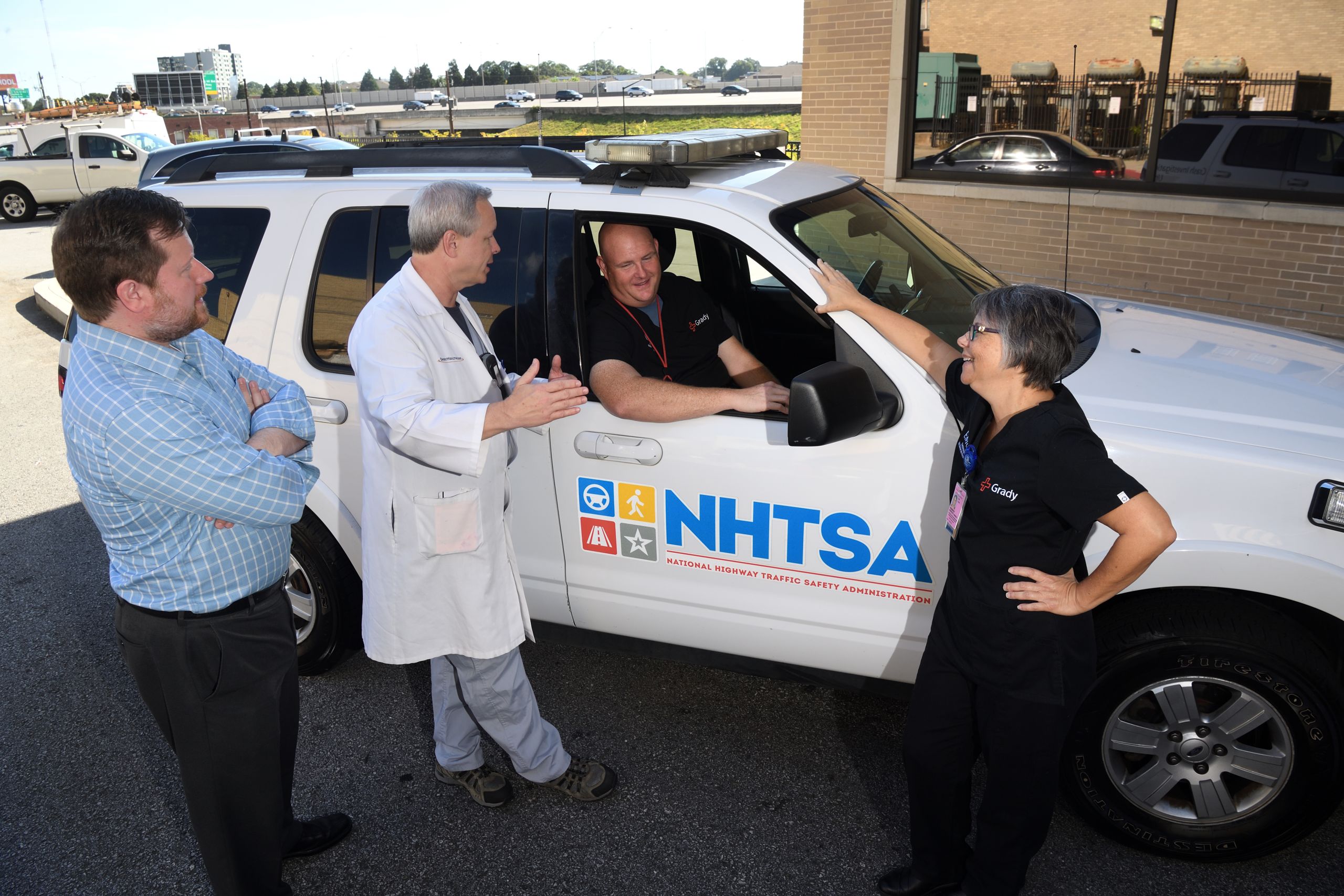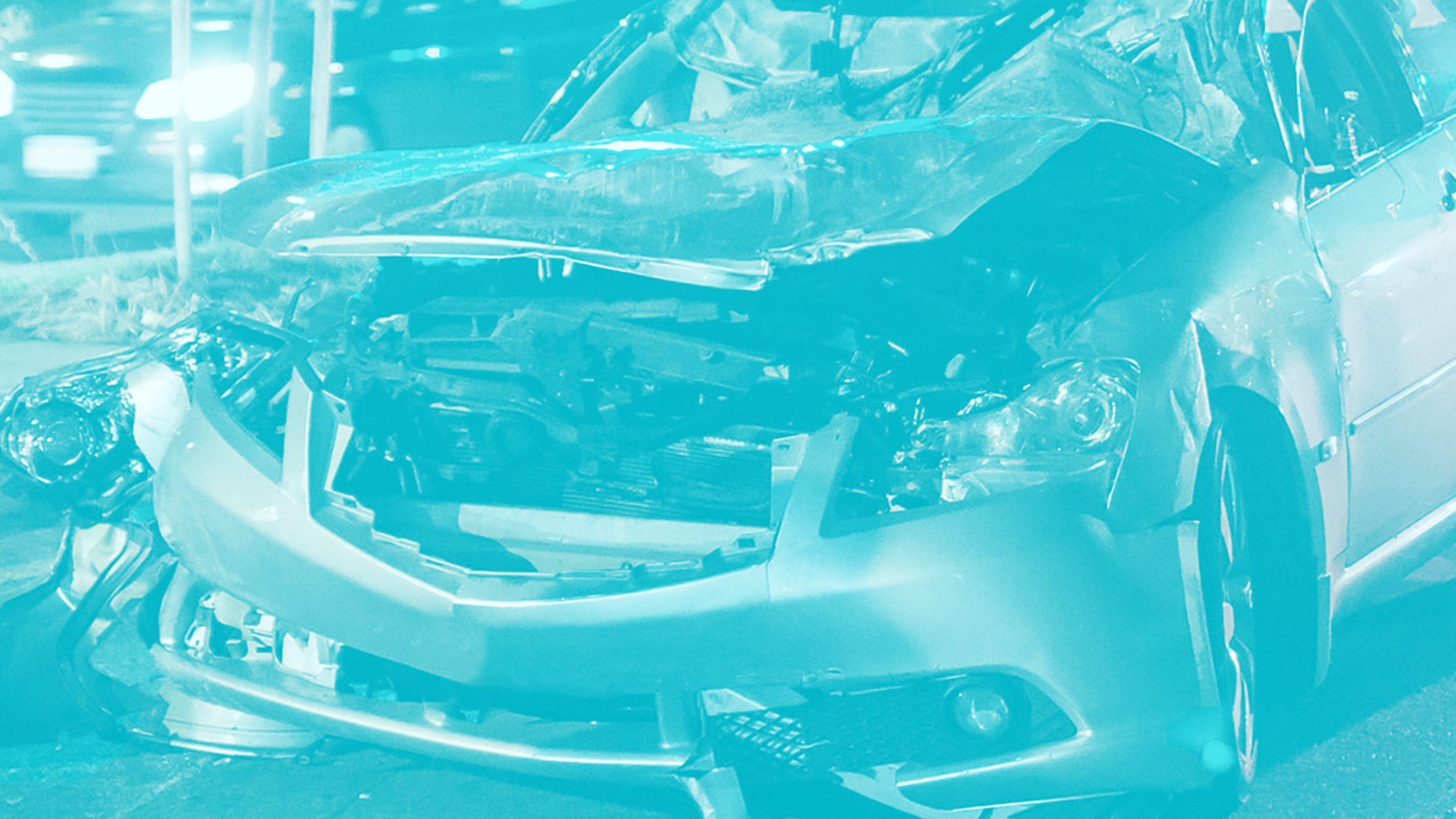Driver behavior—from speeding to distraction—causes most auto accidents. What can be done to reduce the risk?

Until self-driving cars become the norm, human error will remain the primary cause of motor vehicle accidents. The most fatal mistakes when behind the wheel include driving too fast, driving under the influence, tailgating, and distracted driving. Eating in the car (read: spilled food) used to be the No. 1 cause of drivers taking their eyes off the road, but errant French fries and dripping milkshakes have been replaced by cell phone talking, texting, and tapping.

What might seem like a quick glance at a message or typing in a phone number can have dire consequences for the driver and anyone they hit.
Consider these accidents:
In spring 2018, a seven-month-old boy in southwest Atlanta ended up in intensive care with every bone in his neck broken after a driver, who was on his cell phone, collided with a car driven by the baby’s mother. Although the child survived, he has lifelong disabilities from the crash.

In May of the same year, an 18-year-old driver was charged in a crash that killed three pedestrians, including a three-month-old infant, as the group was crossing a street in Woodstock. The driver was putting away her phone when the collision happened.
Injuries from motor vehicle accidents are the No. 1 trauma seen at Atlanta’s Grady Memorial Hospital, resulting in thousands of crash victims each year.
A preventable epidemic
On average, drivers report being distracted more than half the duration of a car trip—and not just by cell phones.
Distractions can be as simple as looking down to adjust a radio station or glancing at the GPS, talking to passengers, looking at something on the side of the road, or putting on makeup.

The toll of distraction is huge. Every day in the United States, nine people die and more than 1,000 are injured in crashes involving a distracted driver. The most recent count, in 2015, showed that 3,477 people died and another 391,000 were injured by drivers who were talking or texting on their cell phones. Drivers under 20 have the most distraction-related fatal crashes, according to the Centers for Disease Control and Prevention.
States like Georgia have enacted new laws to help ensure that people pay more attention to driving and less to their mobile devices. And many modern cars have features to compensate for distractions, such as voice control systems that help keep drivers’ eyes on the road.
It’s hard to change people’s habits, though
Emory and Grady researchers hope that a new study of accident victims in the metro Atlanta area will result in car designs that better protect drivers, pedestrians, and motorcyclists, and reduce the severity of injuries in the event of a crash.
The Crash Injury Research and Engineering Network (CIREN) study is being conducted by Emory’s Injury Prevention Research Center, along with Grady’s emergency department and engineering experts at the University of Michigan.
CIREN is funded by a $4 million grant from the National Highway and Traffic Safety Administration. The Emory/Grady effort is one of seven CIREN centers in the U.S. and one of just two programs in the country designated as both a medical and an engineering center.
Over the next five years, information about 300 accident victims who seek care for their injuries at the Marcus Trauma Center will be entered into a federal database, as will information about the damage to their vehicles.
“Data from CIREN centers help drive rulemaking to make vehicles safer for passengers and support injury prevention through regulation and consumer advocacy testing,” says Jonathan Rupp, associate professor of emergency medicine and principal investigator of the new CIREN. “Grady and Emory together are an ideal location for a CIREN center, which requires a high-volume level one trauma center like Grady’s Marcus Trauma Center coupled with strong biomedical researchers.”
Traffic accidents top priority
Rupp speaks from experience. The biomedical engineer was involved in CIREN at the University of Michigan for more than a decade before being recruited to Emory last year, when the Emory Injury Prevention Research Center decided that reducing injuries from traffic accidents should be its top priority. Upon arrival in Atlanta, Rupp successfully applied for a CIREN grant.
More than a dozen collaborators in emergency medicine, trauma surgery, radiology, crash investigation, and engineering are collecting and analyzing data to better understand the mechanisms of injuries from modern automobiles.
Patients with qualifying injuries—including brain bleeds, ankle fractures, broken ribs, and organ injuries—answer questions about how the injury occurred
With police reports in hand, crash investigators scour the crash scenes. They photograph the vehicles inside and out, download the event recorder (similar to the black box in an airplane), and use a laser measurement system to calculate how the vehicle was impacted.
They look for evidence of seat belt use, like stretch marks or scuff marks, as well as signs of bodily contact and injury, such as blood stains inside the car. They also take note of where the seat is in relation to the steering wheel and how much of the vehicle’s interior compartment got pushed into the occupant compartment.
“The idea is to formally define all the factors that could influence how an injury occurred, from the initial contact to how the force was transmitted through the body,” Rupp says.

CIREN investigators Jonathan Rupp and David Wright talk with crash investigator Ron Tomblin and project coordinator Harriet Howlett-Smith.
CIREN investigators Jonathan Rupp and David Wright talk with crash investigator Ron Tomblin and project coordinator Harriet Howlett-Smith.
Other variables—say, for instance, pre-existing conditions like osteoporosis or obesity—might contribute to the severity of the patient’s injuries. And medications, such as anticoagulants, taken by crash victims could affect the amount of blood or the size of bruises.
A radiologist reviews all medical records to make sure the team hasn’t missed injuries that developed over time.
Next, engineers at one of the six other CIREN centers in the U.S. analyze damage to the vehicle, the contact, how the vehicle moved, how it struck other objects, etc. Likewise, Grady-Emory CIREN team members review data from other centers.
“The engineering review brings in another set of eyes,” Rupp says. “We don’t want to quality control ourselves and it’s better to have a second opinion.”

Lessons from the real world
The transportation industry doesn’t do this kind of research itself for a myriad of reasons, including cost and inability to access patient data because of privacy rules.
The automobile industry could do “tons of test dummy work and put test dummies all sensored up into a car and crash them into brick walls,” says CIREN co-principal investigator David Wright, who co-leads the Injury Prevention Research Center. “But the variability in what happens on the real highway when a car goes down an embankment, hits a light post or a tree, and rolls over—all the different scenarios can’t be modeled. You have to put it out in the real world to see what actually happens.”
The Emory/Grady CIREN study launched in 2017 and enrolled its first patients in October of that year. Since then more than 11,000 people injured in motor vehicle crashes and taken to Grady have been screened, 122 agreed to participate, and to date, 68 have become official CIREN cases. Of those, more than half were in crashes that were frontal impacts, and most of the injuries involved head, chest, or lower extremities.
Eventually, the team plans to investigate crashes involving pedestrians and motorcyclists, both vulnerable populations. “If we look at the future of mobility and safety, increased walking is going to be a big part of that,” Rupp says. “We need to design vehicles and pedestrian infrastructure to make those interactions safer.”
Visibility is a big challenge, especially at night. Some pre-crash or collision-avoidance systems now recognize pedestrians so that if a pedestrian darts out in front of the vehicle it will apply the brakes or alert the driver.
While the goal of the study is to understand how injuries occur and ultimately, to prevent as many as possible, CIREN’s impact is expected to exceed that.
“Motor vehicle crashes take up substantial bandwidth in the emergency department and the Marcus Trauma Center. Anything we can do to reduce that makes us more able to care for other people,” Rupp says.
Another outgrowth of the CIREN study is the Injury Prevention Research Center’s partnership with police and EMS all over the state, including classes on how to download event data recorders, as well as with state lawmakers to help reduce impaired driving and increase seatbelt use.
‘We see just about everything’
While in the past, Emory’s Injury Prevention Research Center had concentrated on violence, it refocused its efforts several years ago after analyzing statistics about the top causes of injury in the metro Atlanta area. “The data was stunning,” says Wright. Heading the list were transportation-related injuries.
Atlanta is No. 4 in the country in pedestrians struck by vehicles, and Grady has one of the busiest trauma centers in the U.S., with some 150,000 patients seeking care there each year. About 10,000 patients annually are admitted for trauma or injury-related issues.
The most common transportation-related death is from traumatic brain injury, says Wright, who also is director of emergency neurosciences at Emory. Working with residents, he typically sees 40-some patients during his eight-hour shifts at the Grady trauma unit.
“It’s unbelievable how many collisions and crashes and injuries we get,” Wright says. “We see just about everything that could happen to a human body in a motor vehicle—head, chest, abdominal, extremity injuries—and any of them can be devastating. If victims survive long enough to get into an ambulance and make it to the hospital, they are going to end up in our shop.”
A countless number of scenarios can, and do, occur.
“The beauty of this study is, it links what was damaged in the vehicle and what was damaged in the human,” Wright says. “We’re looking for red flags that cause more severe injury, and by feeding that information back to the National Highway Traffic Safety Administration, we help them with policy, and help automobile makers redesign their cars to make them safer.”
The program is ongoing, since every year brings design changes to vehicles and changes in the environment; even the human population is changing. The average car—seat belts, steering wheel, safety mechanisms, and more—is designed for a 170-pound, 5-foot-9-inch man or a 105-pound, 5-foot woman.
“But if you put an obese person or an elderly frail person in a car, injury patterns are a lot different than for an average-sized human,” Wright says, “so there’s still a lot to be learned.”
The case for self-driving cars
Autonomous vehicles hold great promise for injury prevention, but no vehicles currently sold in the U.S. are completely self-driving. Most are “situationally” autonomous, with features that have been around for a while, like adaptive cruise control and electronic stability control.
Lane departure prevention systems, lane change assist, backup cameras and warnings, and other features are becoming standard features and providing “substantial benefits” in terms of preventing crashes, according to the Insurance Institute for Highway Safety.
As more autonomous features show up on the road, the “geometries of vehicles inside and outside are going to change,” says Rupp.
GM, for example, hopes to put cars without steering wheels and pedals on the road next year. “That’s going to change the interior geometry of the car and how it’s going to perform in a crash,” he says, “and that will affect how to protect occupants.”
Someday, car manufacturers may even veer away from one-size-fits-all to more personalized vehicles. “You might even have the option of an elderly package upgrade just like you can upgrade your sound system,” Wright says. “If a car has multiple drivers, that might not make sense but, in theory, special packages for the obese or elderly could be specially tailored. This would come at a cost, but it can be done.”
In the meantime, CIREN participants will help determine how cars can be made safer in the future, reducing the chance of injury for all.

Driving is 'Serious Business'

On a clear and bright November afternoon, Marion Farmer had just finished her coffee at a Starbucks in Buckhead and was on her way to see her husband at an assisted living facility nearby. As she drove up Peachtree Street, a large, older car hung a left out of a church parking lot. It crossed four lanes of traffic then rammed into Farmer’s beloved, robin’s-egg blue Mini Cooper in the fifth lane and spun it around.
The impact crushed the driver’s side, pinning the 77-year-old grandmother inside. “I knew I was injured; I couldn’t move,” Farmer remembers. First responders had to saw through the bent steel frame before they could extract her from the car and rush her to Grady Memorial Hospital.
A fractured clavicle and broken ribs kept her there for a week before she was transferred to a nursing care facility, where she spent two months in rehab to rebuild the strength on her left side.
While at Grady, Farmer agreed to participate in CIREN, a study that may someday result in cars that better protect drivers, pedestrians, and motorcyclists alike and reduce the severity of injuries if they are in a crash.
Farmer says her injuries have been life changing. She is still weak on her left side and her memory is not as good as before the crash. Previously “always on the go,” she now depends on friends, family, or car services to take her to run errands or to visit her husband.
She no longer feels strong enough to drive, much less run the-mile-and-a-half loop from her condo to St. Philips Cathedral like she did before the accident. But she’s held on to her driver’s license, waiting for the day she can buy a “big, old car” to do nearby errands on her own.
A former faculty administrator at a federal research university, Farmer didn’t hesitate when asked to join the CIREN study and hopes that it will help others.
“Driving in Atlanta is serious business,” she says. “Motor vehicle accidents are just pure scary. I think that being aware of what’s going on and trying to prevent accidents should be foremost in our minds.”

Need to know more?
Please visit Emory Health Digest Magazine, Emory News Center, and Emory University.


